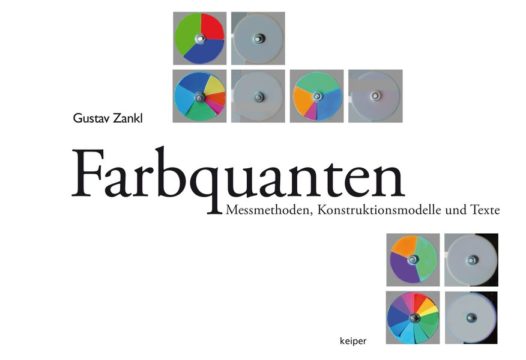The phenomenon of colour may be approached scientifically by way of the physics of colour, a branch of optics; or via spectral analysis, using spectral light; or through colour chemistry, with colour pigments and paints. For anyone looking at colours, however, colour largely means emotion. Colour perception takes place in our heads, as a sensation within our minds: it is a tying-in of cognitive and physiological processes. Outside, in the real world that surrounds us, there are no colours: grey prevails, ranging from white light to black or zero luminosity. Those are the main starting-points of the present publication.
Gustav Zankl’s colour quant investigations are based on Sir Isaac Newton’s spectral analysis of about 1670 that identified seven colours including colour quantities, and first arranged colours in a colour circle. About a century and a half later, Arthur Schopenhauer determined the quantitative proportions of basic colours with the help of a spinning top and pigment paints. Newton and Schopenhauer are the founding fathers (as it were) of colour quants.
Zankl followed Maxwell’s system of spinning tops for his experiments, using discs coated with acrylic paint. He proves that colour circles are indeed feasible, but are wrong if the colour quant system is followed. The general opinion (to date) that a mixture of complementary colours results in neutral grey, could not be verified. Neutral grey can only be obtained by mixing three or more pigment paints. Colour quants, however, are proportional quantities of ‘cold’ and ‘warm’ colours in a relation of 3 : 2.
Insights from these investigations have informed Zankl’s Concrete Art: a selection of his own art objects can be found at the end of this publication.
- Veröffentlicht am Donnerstag 31. August 2017 von edition keiper
- ISBN: 9783903144392
- 88 Seiten
- Genre: Bildende Kunst, Kunst, Literatur, Sachbücher
